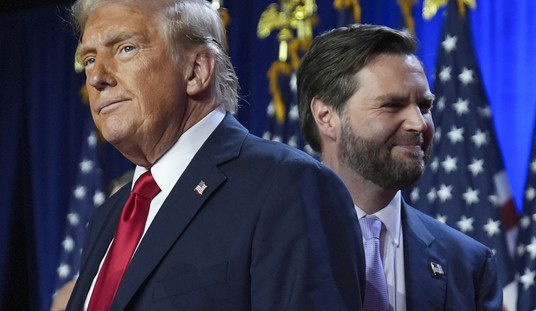For years now, the drug war raging between the well-armed Mexican drug cartels and the Mexican government has been well documented by the international press. And with that war now spilling into American cities located near the Mexican border, news agencies here are paying more attention to the escalating violence. But while there has been no shortage of reportage on the drug war, few reporters are investigating the rampant corruption within the Mexican government itself that has facilitated the spread and growth of that drug trade — and in many cases has participated in it.
Today, as Mexican drug cartels become more emboldened and lawlessness spreads throughout the country, the Mexican government is struggling to maintain control. One by one, cities within Mexico are being taken over by drug lords and criminal kingpins, as mayors, police chiefs, and police officers are either bought or assassinated by the cartel leaders.
During his campaign for president in 2006, Mexican President Felix Calderon vowed to go after the drug cartels and to reduce drastically the drug-related crime wave that besieged the nation. However, what President Calderon apparently did not take into consideration when making this campaign promise was the rampant corruption within the government itself, from its judicial system to law enforcement, which has allowed this unprecedented growth in power and influence by the Mexican drug lords.
Only four short years ago, it seems Felipe Calderon had no idea how insidious the corruption had become. In a leaked diplomatic cable from the U.S. embassy in Madrid, a conversation in 2007 between the Mexican president and the visiting former Spanish President Jose Maria Aznar reveals that Calderon had admitted that the Mexican government had completely miscalculated the corruption in Mexico and the influence wielded by the drug cartels:
Aznar had just completed a trip to Mexico and believes that President Calderon is doing a “credible job.” Aznar said Calderon admitted to having completely misjudged the depth and breadth of corruption in Mexico and that the pervasive influence of narcotics in the country was beyond comprehension.
The “credible job” Aznar referred to is debatable when you consider that three years later the drug war in Mexico has only gotten worse, and the corruption that has permeated the Mexican government has grown and continues to provide aid and shelter to the criminal rings that operate virtually unchallenged within the country. It is estimated that 90% of the cocaine that is brought into the U.S. comes through Mexico, and while close to 40,000 Mexicans have been killed by drug violence in the past four years, only 2% of the crimes committed are ever punished. This gives the drug lords an immense advantage not only over the Mexican president, but over the Mexican population as well, which is powerless to combat the violence.
What hope for a normal and safe existence can a law-abiding Mexican have when he or she knows that for every 100 of their fellow countrymen beaten, raped, or murdered, only two will see justice prevail?
Even when the Mexican government manages to capture one of the capos, as they refer to the drug kingpins, too often these ringleaders go free due to lack of evidence, legal errors, or unlawful actions committed by government law enforcement officials during their investigations. Blog del Narco (www.blogdelnarco.com), a popular Mexico based blog run by two anonymous bloggers reporting on the drug-related violence happening throughout the country, reported recently on five high-profile cases of captured capos who ended up going free:
Whenever the federal government captures a capo they display them like collected trophies, going as far as showing them on national television. However, when the time comes to prove their guilt to judges, all the sub-secretary of the Organized Crime Special Investigations department (SIEDO) collects is defeats.
Five cases of accused high-profile drug traffickers, some included in government television spots, have been thrown out by the judicial authorities this past year for lack of evidence, omissions or errors in the case files, or for illegal actions undertaken by the investigative authorities.
As the violence increases and the drug lords gain control of more cities, the Mexican government finds itself struggling to defeat an enemy that seems to grow stronger with each passing day. This reality calls into the question the stability of the country itself: how much longer can the government of Mexico continue to hold power while it continues to lose control?
A nation sharing a border with the U.S. descending into anarchy is a frightful thought for Americans, and the obvious implications of such an event should be causing concern throughout the halls of the White House and the State Department. To complicate matters further, consider that Mexico is home to over 112,000,000 people and is an important trading partner to the U.S. And in spite of the corruption and mismanagement, the country is one of the world’s top producers of petroleum with an impressive trillion-dollar economy. A collapse of the government there would not only cause a security threat on our southern border, it would also send harmful shockwaves through the American economy and the world economy as well. And that would only be the beginning.
The corruption within Mexico does not only manifest itself in the drug trade, it is apparent in society as well. With its trillion-dollar economy and petroleum production, Mexico still manages to have 47% of its population living below the poverty line according to 2008 figures. This makes the narcotics trade not only a viable and acceptable option for many Mexicans, but in some cases an unavoidable one.
Nothing illustrates the societal shift away from the rule of law that appears to be taking place south of the border better than the latest trend among Mexican children. Instead of emulating superheroes and sports stars during playtime, children are now emulating drug cartel assassins.
In another report from Blog del Narco, we learn that Mexican children have given up playing typical children’s games such as soccer, and have traded in their soccer balls for toy weapons in order to play “assassins”:
It may seem incredible to some that the children no longer play soccer on the streets as before. Now they pretend to be assassins. They form teams, just as before, but now they arm their mini commando units to engage in imaginary battles that perhaps in the future will be their reality.
The girls too form part of this game, leaving their dolls to the side to turn themselves into assassins. Some are even the commanders in these play groups of children.
The situation with the Mexican children has gotten so out of hand that parents have begun prohibiting their children from having plastic guns and weapons. Even the Mexican government’s consumer protection agency, PROFECO, launched a campaign during the Christmas season exhorting retailers to remove plastic guns, rifles, and machine guns from their toy shelves.
The drug war taking place in Mexico deserves the coverage it has received, but the corruption within the Mexican government and its inability to effectively combat the drug cartels merits as much or more of that coverage. It is a deadly combination that threatens to destabilize a nation with 112 million inhabitants to the point of anarchy. A nation bordering the U.S. with an out-of-control drug war is a serious threat. A nation bordering the U.S. in a state of anarchy, with the only authority being well-funded and well-armed drug kingpins, is a clear and present danger.









Join the conversation as a VIP Member